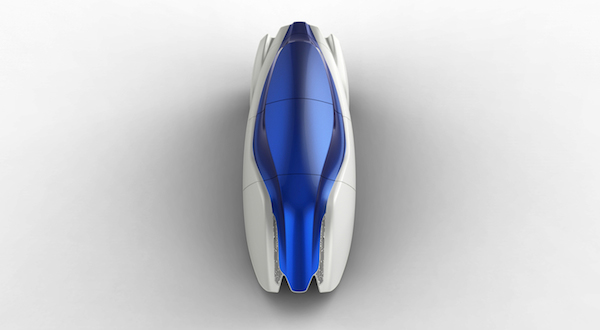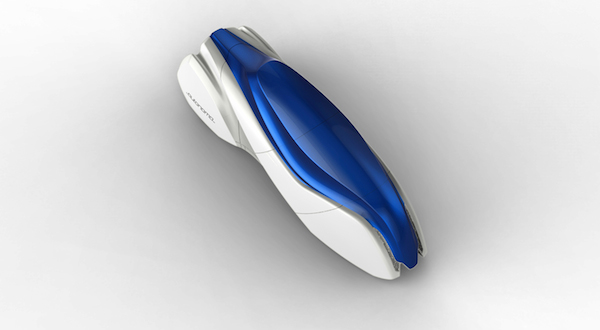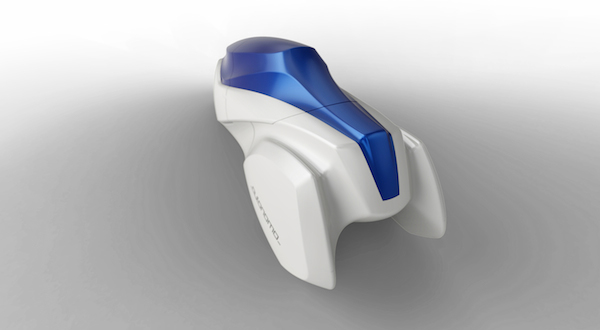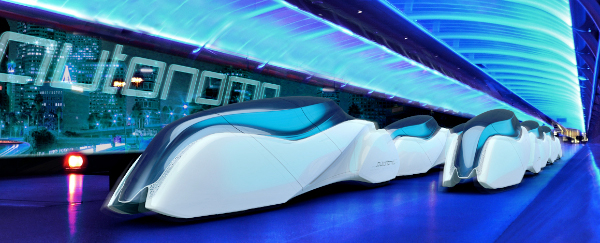

The Concept
Autonomo is a fully autonomous vehicle designed for the year 2030 to overcome many of the major problems facing many of the world’s major cities like Los Angeles face today. Its main sources of inspiration are drawn from biomimicry, sustainability, artificial intelligence and information technology.
Its objectives are to alleviate congestion, maximize access through the already existing road network, improve energy efficiency and create a completely carbon neutral transportation option. We can achieve all of this with minimal restructuring of the existing road infrastructure through the use of advanced smart technologies.
The Problem
The Problem

Urban Sprawl
The greater Los Angeles metropolitan area can be characterized as a network of cities joined by a highway network rather than a city with a concentrated city centre. Planning of the highway network began in the 1930’s, but by 2004 only 61% of the highway miles proposed in the 1954 master plan had been built. Some routes were left incomplete while others were abandoned and this resulted in gaps and bottlenecks throughout the highway system, which caused a ripple effect across the entire network.
Los Angeles also has the country’s densest metropolitan area which adds extra strain on its roads. The imbalance between the supply and demand of road capacity causes severe congestion during peak times, and the problem is getting worse every year. When possible, the people of Los Angeles plan their entire day around morning and afternoon peak congestion times.
The greater Los Angeles metropolitan area can be characterized as a network of cities joined by a highway network rather than a city with a concentrated city centre. Planning of the highway network began in the 1930’s, but by 2004 only 61% of the highway miles proposed in the 1954 master plan had been built. Some routes were left incomplete while others were abandoned and this resulted in gaps and bottlenecks throughout the highway system, which caused a ripple effect across the entire network.
Los Angeles also has the country’s densest metropolitan area which adds extra strain on its roads. The imbalance between the supply and demand of road capacity causes severe congestion during peak times, and the problem is getting worse every year. When possible, the people of Los Angeles plan their entire day around morning and afternoon peak congestion times.
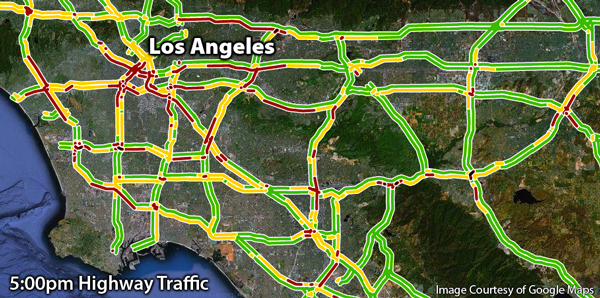
Building A Way Out
Most strategies to reduce congestion gradually become less effective over time. This includes the expansion of roads or the construction of new ones. A phenomenon called 'triple convergence' occurs when extra capacity is added on a road during peak hours. Travelers converge on this extra capacity from either 1) other times of travel; 2) other routes of travel; and 3) other modes of travel. This gradually erodes the initial benefits of this extra capacity.
Due to the economic cost of maintaining a vast highway network, many US cities have been reluctant to significantly expand the current highway infrastructure since it is not economically sustainable.
Most strategies to reduce congestion gradually become less effective over time. This includes the expansion of roads or the construction of new ones. A phenomenon called 'triple convergence' occurs when extra capacity is added on a road during peak hours. Travelers converge on this extra capacity from either 1) other times of travel; 2) other routes of travel; and 3) other modes of travel. This gradually erodes the initial benefits of this extra capacity.
Due to the economic cost of maintaining a vast highway network, many US cities have been reluctant to significantly expand the current highway infrastructure since it is not economically sustainable.

Traffic Shockwaves
In 2008 a Japanese research project run by Nagoya University successfully reproduced traffic shockwaves in the absence of bottlenecks at highway intersections, on-ramps and tunnels. This occurs when each driver keeps a safe buffer zone between themselves and the car in front of them to account for sudden unexpected changes in traffic speed. Due to such behavior, vehicles can be seen as particles moving collectively. The team developed a mathematical model to accurately predict when traffic shockwaves would occur. In the future, this data could be used in an autonomous system to better maintain the transportation needs of the entire city.
Inspiration
Inspiration

Research into biomimicry revealed many insights into how energy was conserved when valued as a scarce resource needing to be constantly replenished. Other findings included the organization and collaboration between large numbers of individual organisms to form a collective whole. There are many examples in the animal kingdom where certain species act in collective unity to achieve common goals. Examples can also be found in sports such as the Tour De France where riders must work together to conserve energy to last the entire distance.
Concept Development
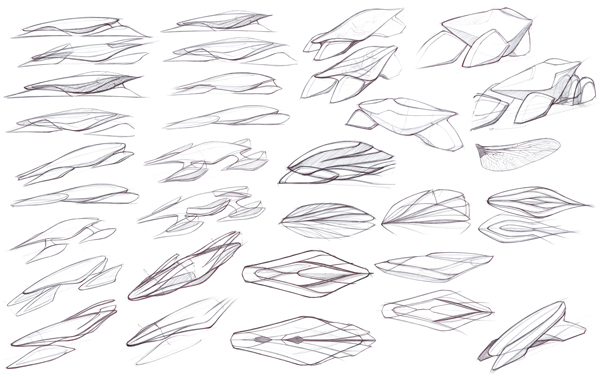
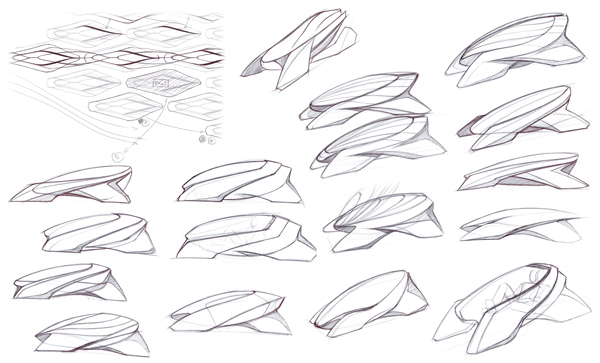
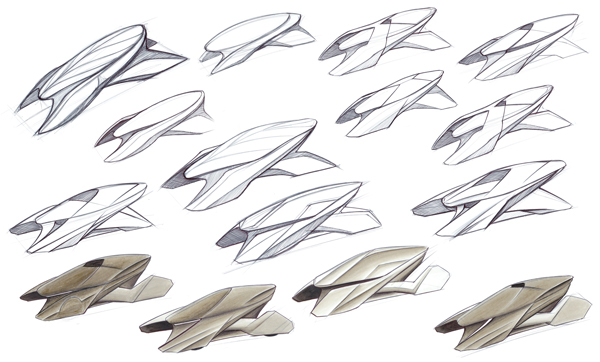
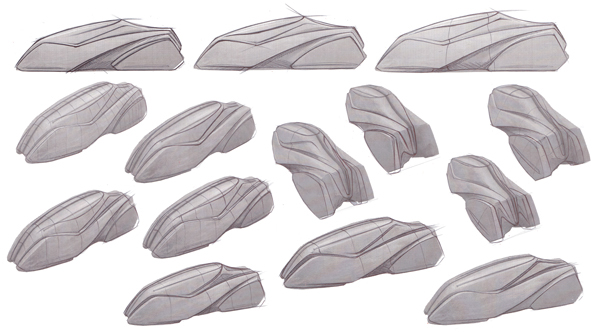
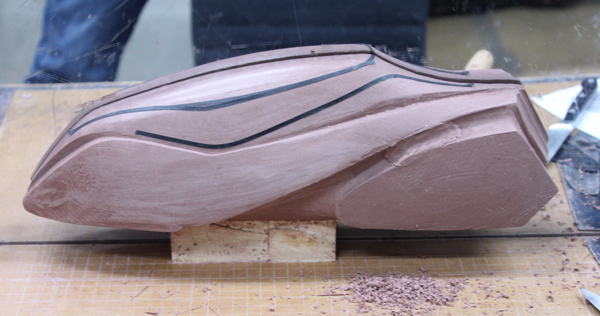

Artificial Intelligence
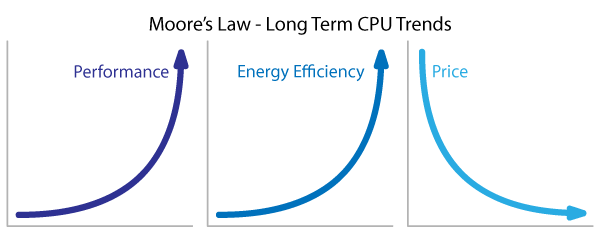
Moore's Law, first predicted in the 1970’s, talks about the long-term exponential growth of technology. It states that the performance of a computer’s central processing unit (CPU) consistently doubles every 2 years. This means that by the year 2030, the average mass-market computer chip will be 1024 times more powerful than the average computer chip in 2010. It also means that a single computer chip will be able to do more computations per second than the human brain itself.
As the performance of CPUs exponentially improves, so does its energy efficiency. Additionally, its price will conversely fall exponentially. The exponential growth of computer chip technology affects all areas of technological development.
“Because we’re doubling the rate of progress every decade, we’ll see a century of progress - at today’s rate - in only 25 calendar years.” - Ray Kurzweil
On Board Technology
This concept vehicle utilizes a drive-by-wire control system that replaces traditional mechanical components and harnesses the exponential development of technology due to the efficiency of its electronics. Autonomo also uses an onboard computer system to perform the various processes involved in driving, including, but not limited to, monitoring and controlling the vehicle, perceiving the environment and various objects around it, and communicating and anticipating events in its immediate surroundings.
As the performance of CPUs exponentially improves, so does its energy efficiency. Additionally, its price will conversely fall exponentially. The exponential growth of computer chip technology affects all areas of technological development.
“Because we’re doubling the rate of progress every decade, we’ll see a century of progress - at today’s rate - in only 25 calendar years.” - Ray Kurzweil
On Board Technology
This concept vehicle utilizes a drive-by-wire control system that replaces traditional mechanical components and harnesses the exponential development of technology due to the efficiency of its electronics. Autonomo also uses an onboard computer system to perform the various processes involved in driving, including, but not limited to, monitoring and controlling the vehicle, perceiving the environment and various objects around it, and communicating and anticipating events in its immediate surroundings.

Perceiving the World
Autonomo uses overlapping layers of sensors to build a live feed of its environment. These may include radar, microwave, lidar, optical and infrared sensors. Lidar and laser could be used to scan the road for vehicles up to 200 meters ahead and/or behind you. An array of high definition cameras used in conjunction with object recognition technologies can read and detect lane markers and road signs, interpret human gestures, and predict the path of pedestrians, cyclists, vehicles, hazards and other objects. Different types of microwave sensors will be tasked to accurately determine very close distances around the vehicle and to also scan road surface conditions ahead. Infrared technology could compliment other types of sensors such as optical cameras where the line of sight may be impeded due to objects or weather conditions.
Autonomo uses overlapping layers of sensors to build a live feed of its environment. These may include radar, microwave, lidar, optical and infrared sensors. Lidar and laser could be used to scan the road for vehicles up to 200 meters ahead and/or behind you. An array of high definition cameras used in conjunction with object recognition technologies can read and detect lane markers and road signs, interpret human gestures, and predict the path of pedestrians, cyclists, vehicles, hazards and other objects. Different types of microwave sensors will be tasked to accurately determine very close distances around the vehicle and to also scan road surface conditions ahead. Infrared technology could compliment other types of sensors such as optical cameras where the line of sight may be impeded due to objects or weather conditions.
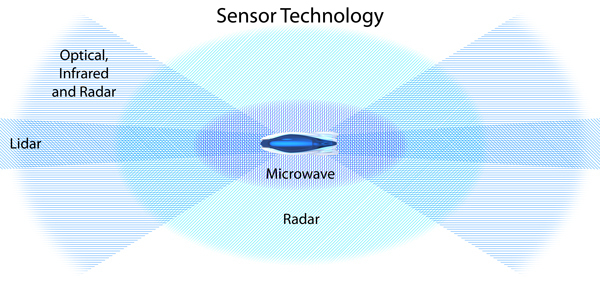
Communications
Every Autonomo vehicle will synchronize with each other in real-time and share the data it collects to enable accurate decision making. It will then coordinate with every other vehicle in the city to build a complete understanding of citywide traffic conditions and patterns. Autonomo vehicles will behave as individuals with a collective goal of maintaining maximum safety and throughput of every road in the network. Their collective nature would provide maximum energy efficiency since fluctuations in traffic speed and mobility demands are instantly transmitted or anticipated ahead of time.
Every Autonomo vehicle will synchronize with each other in real-time and share the data it collects to enable accurate decision making. It will then coordinate with every other vehicle in the city to build a complete understanding of citywide traffic conditions and patterns. Autonomo vehicles will behave as individuals with a collective goal of maintaining maximum safety and throughput of every road in the network. Their collective nature would provide maximum energy efficiency since fluctuations in traffic speed and mobility demands are instantly transmitted or anticipated ahead of time.
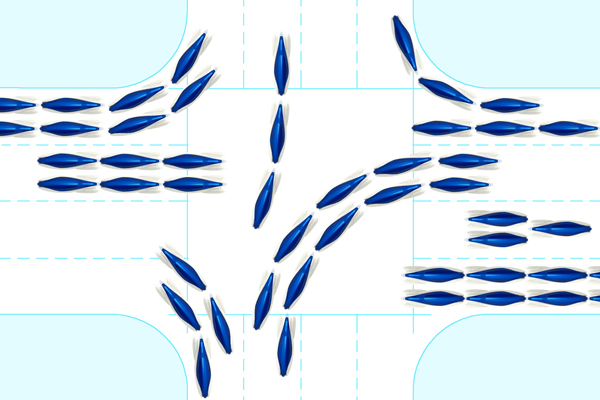
Cloud-based Learning System
Real-time data of the road network will be continually updated on a centralized traffic management system. Algorithms that govern the behavior of the vehicles and the traffic-management system will evolve as the system learns from the information it collects. The centralised management system will predict changes in transportation needs based on various conditions and events that may affect traffic flow by using historical data in conjunction with real-time data, constantly balancing anticipated mobility demands with mobility supplies across the entire road network. During times of excess demand, a routing system would divert traffic from routes that may be slowed by high volume traffic to routes that have excess capacity.
Sustainability
Real-time data of the road network will be continually updated on a centralized traffic management system. Algorithms that govern the behavior of the vehicles and the traffic-management system will evolve as the system learns from the information it collects. The centralised management system will predict changes in transportation needs based on various conditions and events that may affect traffic flow by using historical data in conjunction with real-time data, constantly balancing anticipated mobility demands with mobility supplies across the entire road network. During times of excess demand, a routing system would divert traffic from routes that may be slowed by high volume traffic to routes that have excess capacity.
Sustainability
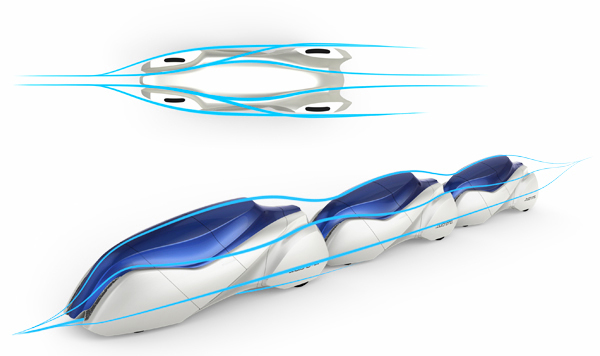
Aerodynamics and Platooning
The aerodynamic, streamlined form of Autonomo helps to reduce drag. Whenever 2 or more Autonomo vehicles travel along the same route, they will automatically form a platoon, or synchronized groups. Wind tunnel tests conducted by the California PATH project showed that cars following each other at a distance of 6.5 meter distances reduce energy consumption by 20-25%. Autonomo is able to synchronize its movements when in platoon mode to follow each other at small 20 centimetre distances which enables the vehicles to significantly reduce energy consumption.
The aerodynamic, streamlined form of Autonomo helps to reduce drag. Whenever 2 or more Autonomo vehicles travel along the same route, they will automatically form a platoon, or synchronized groups. Wind tunnel tests conducted by the California PATH project showed that cars following each other at a distance of 6.5 meter distances reduce energy consumption by 20-25%. Autonomo is able to synchronize its movements when in platoon mode to follow each other at small 20 centimetre distances which enables the vehicles to significantly reduce energy consumption.

Clean Energy
Underneath the nanoscale surface texture, Autonomo will have 2 transparent photovoltaic layers that turn solar energy into electricity. It uses advanced lightweight batteries to store energy that is able to be wirelessly charged in minutes though electrodynamic induction or energy transfer lasers. High-volume roads or lanes could contain induction charging pads placed on the surface to wirelessly charge vehicles as they move. When in platoon mode, Autonomo vehicles also share energy with other vehicles.
Biomimicry and Swarm Intelligence
Underneath the nanoscale surface texture, Autonomo will have 2 transparent photovoltaic layers that turn solar energy into electricity. It uses advanced lightweight batteries to store energy that is able to be wirelessly charged in minutes though electrodynamic induction or energy transfer lasers. High-volume roads or lanes could contain induction charging pads placed on the surface to wirelessly charge vehicles as they move. When in platoon mode, Autonomo vehicles also share energy with other vehicles.
Biomimicry and Swarm Intelligence
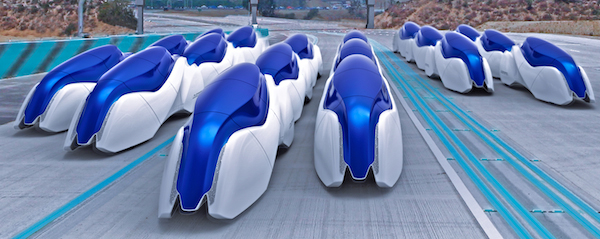
Autonomo vehicles respond to the city’s mobility needs in total synchronization and coordination which each individual vehicle’s task. The vehicles will act as a single organism across the entire city’s road network with the sole task of safe, fast, and energy efficient transportation. Autonomo vehicles will move through the city’s road network like a school of fish, using everything it has learnt to conserve energy and work together.
1 + 1 Package

Autonomo is designed to hold up to 2 adults or 1 adult with additional room for luggage. The main luggage compartment is in the back of the vehicle, as are most of its components. According to the California Department of Transportation, the average vehicle occupancy in the city of Los Angeles is 1.3 persons. This means that Autonomo would be suitable for the majority of transportation needs.
Features
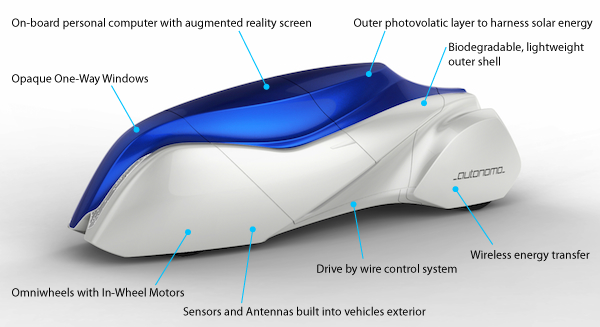
Technical Drawings
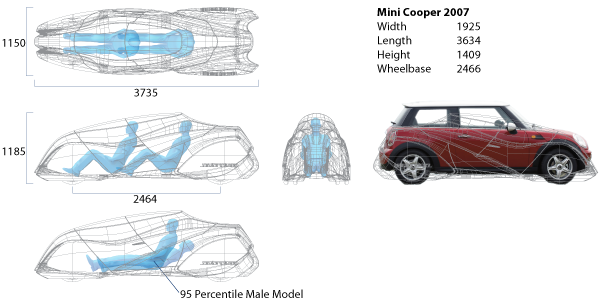
The length and wheelbase of the vehicle is similar to the 2007 Mini Cooper. However, it is only 1150 mm wide so it allows for 2 Autonomo vehicles to fit in a standard sized lane or parking spot. The overall smaller form and small frontal facade also allows for significant reduction in form resistance.

